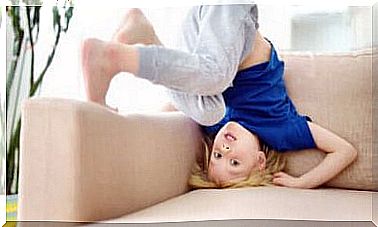How To Calm A Baby With Colic?

Colic occurs in about one in ten children. Because it is a very common ailment, it is important for parents to be aware of its symptoms and to be able to soothe a baby with colic properly.
What is colic?
Colic refers to the abundant unexplained crying of an infant child. It usually begins about two weeks after birth and continues until 3-4 months of age. The official diagnosis of colic requires at least three hours of crying at least three days a week for at least three weeks.
The exact cause of colic is not known, but there are thought to be several causes behind it. Colic ailments have traditionally been associated with slow development or disruption of intestinal function or intestinal gas formation, but today it is thought that in some children the ailment may be related to more general nervous system development.
For example, there may be the following reasons for colic:
- Reflux, the flow of stomach contents back into the esophagus, throat, throat and mouth.
- Digestive problems that can be caused by protein or lactose intolerance.
- An underdeveloped digestive system can cause intestinal muscle cramps.
- Gas accumulating in the intestine.
- Higher than normal hormone levels can cause restlessness and abdominal pain.
- Particularly high sensitivity to environmental stimuli such as light and sound.
- Underdeveloped nervous system.
- High or low temperatures.
To date, there is no scientific evidence that colic has long-term effects on a child’s health.
How do you recognize that your baby is suffering from colic?

- Inconsolable crying episodes in the baby. A baby with colic usually cries at the same times every day, usually in the evening or at night. Seizures caused by colic can last from a few minutes to hours.
- Intense crying. The crying caused by colic is intense and sounds very painful. Crying is high frequency, and the face of a crying baby turns red. It can be very difficult to calm your baby.
- The baby cries for no apparent reason. It is common for babies to cry. The child may signal with his crying that his diaper should be changed, that he is hungry, or that he is too cold or hot. However, if the baby cries for no apparent reason, the crying may be due to colic.
- Change in position. The baby with colic has his fists in his fists, his abdominal muscles tense and his legs elevated. Her face starts to turn red and her stomach feels hard.
How to soothe a baby with colic?
The following tips can be used to help relieve cramps in a baby with digestive problems.
During breastfeeding
It is a good idea for breastfeeding mothers to avoid asparagus, flower, rose and white cabbage and other similar foods. They have been found to be associated with gas-forming stomach infections. You should also avoid eating very spicy foods.
If your baby is being fed a powdered infant formula, you may want to monitor the ratio of milk powder to water. It is important to follow the instructions in the package leaflet or the advice of your nurse. The nurse or doctor will be able to tell the appropriate dosage according to the child’s age and needs.

Other means
- Always belch your baby after eating. Make sure he burps enough times.
- Gently rub the baby’s stomach clockwise. At the same time, move his legs gently.
- Sow your baby in a warm bath. In this way, the child feels more comfortable, in addition to which staying in warm water calms him down.
- Place the baby in an upright position, either with a specially made chair or by holding him or her in your arms. This position helps the child to get rid of the air accumulated in the intestine and reduce acidity.
If you suspect your child is suffering from colic, consult a clinic or doctor, and experts will provide more information on how you can help your little one in the best way possible.








